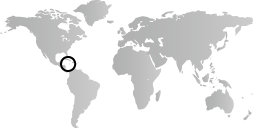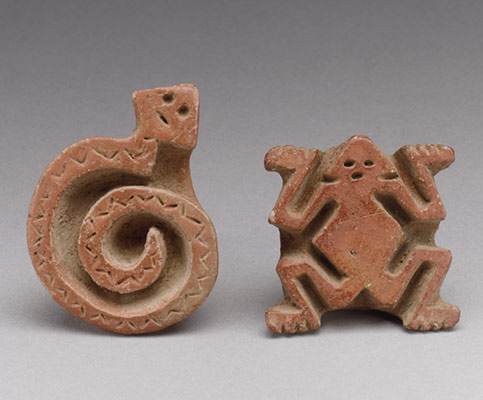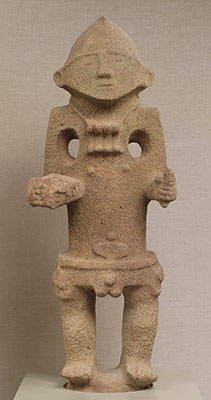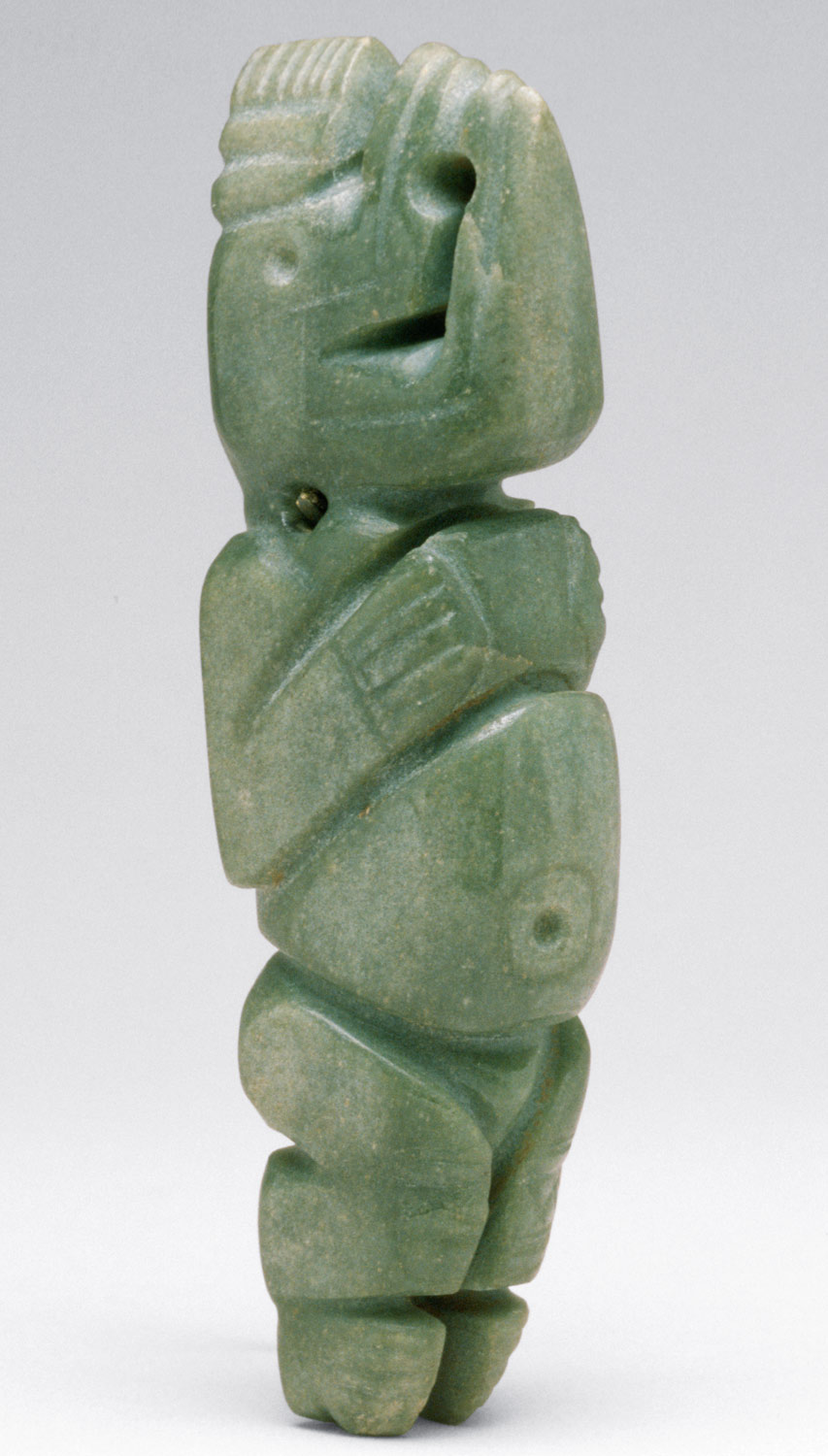Permanent settlements increase in number and size, probably the result of greater contact with peoples from the north—Mesoamerica—and the south—Colombia in northern South America. Trade and communication networks appear to be well established. Impressive quantities of luxury goods in elite burials indicate growing distinctions of social class, with a concentration of valued objects in fewer hands. Several new polychrome ceramic styles appear. Jade and greenstone carvings, important status markers for over a thousand years in north-central Costa Rica, cease to be made, and gold, abundant in alluvial deposits in the region’s rivers, becomes the preferred material for the manufacture of prestige items.
Central America and the Caribbean, 500–1000 A.D.
Timeline
500 A.D.
625 A.D.
NORTHERN COSTA RICA
EASTERN COSTA RICA
SOUTHERN COSTA RICA
PANAMA
GREATER ANTILLES
625 A.D.
750 A.D.
NORTHERN COSTA RICA
EASTERN COSTA RICA
SOUTHERN COSTA RICA
PANAMA
GREATER ANTILLES
750 A.D.
875 A.D.
NORTHERN COSTA RICA
EASTERN COSTA RICA
SOUTHERN COSTA RICA
PANAMA
GREATER ANTILLES
875 A.D.
1000 A.D.
NORTHERN COSTA RICA
EASTERN COSTA RICA
SOUTHERN COSTA RICA
PANAMA
GREATER ANTILLES
Overview
Key Events
-
ca. 500
Goldworking is fully established in the region and gold objects remain locally significant until the coming of Europeans in the mid-sixteenth century.
-
ca. 500
Polychrome ceramic traditions begin to blossom in many regions of both Costa Rica and Panama. Bowls, jars, ollas, and figurines are colored in vivid yellows, reds, oranges, maroons, and blacks.
-
ca. 550 A.D.
The populations of the islands of the Greater Antilles—Jamaica, Puerto Rico, Hispaniola, and Cuba—are increasing. The islands have been inhabited by people who centuries, perhaps millennia, earlier migrated from various mainland locations in Mexico and South America.
-
ca. 600
Improved stone-carving techniques lead to extraordinary detail on Costa Rican effigy metates (grinding tables). Complex human, animal, and composite beings, often part of multifigure scenes, embellish the stone “tables.” The metates go out of favor by about 900 A.D.
-
ca. 600
The boldly drawn Conte polychrome ceramics of central Panama feature creatures that may relate to myths, shamanism, or cosmology.
-
ca. 600
Worked jade from the Maya area is traded to Costa Rica, where it is recarved.
-
ca. 700
A shift in house shape away from the preferred rectangular plan to circular dwellings, as seen in the site of La Fábrica in the central highlands of Costa Rica, is thought to be evidence of contact with Colombia to the south.
-
ca. 700
Along Panama’s Parita River, an important cemetery comes into use at a center today known as El Hatillo. Many spectacular gold objects—embossed plaques, flange-footed frogs, bat- and saurian-human figure pendants—come from its burials.
-
ca. 750
A powerful chief dies and is buried at Sitio Conte on the banks of Río Grande de Coclé in central Panama. The chief is laid to rest with twenty-two sacrificed companions and a wealth of gold finery, including large pectoral plaques embossed with sacred images. It is the richest Precolumbian tomb documented for Central America.
-
ca. 800
In central and eastern Costa Rica, freestanding stone sculptures of warriors, some reaching five feet in height, and masked human figures are placed around ceremonial spaces at important sites such as Las Mercedes and Guayabo de Turrialba in the Atlantic Watershed.
-
ca. 800
In Greater Nicoya, a shift of population toward the coast takes place, possibly for greater exploitation of marine resources.
-
ca. 800
Regionally distinct ceramic traditions begin to take shape in the Greater Antilles.
-
ca. 900
Polychrome ceramics continue in popularity. Some styles in northern Costa Rica have Maya-type images.
-
ca. 950
In the Atlantic Watershed of Costa Rica, several centers flourish that share similar architectural features, among them Guayabo de Turrialba and Las Mercedes. At Guayabo, there are over forty circular mounds as well as three aqueducts, two plazas, and one causeway. The circular plans of house mounds and foundations indicate relationships to some Colombian sites.
Citation
“Central America and the Caribbean, 500–1000 A.D.” In Heilbrunn Timeline of Art History. New York: The Metropolitan Museum of Art, 2000–. http://www.metmuseum.org/toah/ht/?period=06®ion=cac (October 2001)
Related
Map




















